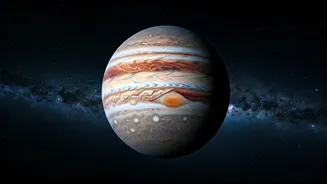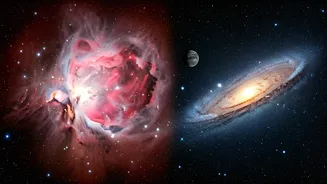Super-Earth's Potential
Scientists recently identified a 'Super-Earth' known as GJ 251 c, which is potentially one of the most promising candidates for harboring alien life. This
exoplanet sparks excitement due to its characteristics and its potential to support conditions favorable to life. The discovery is significant as it provides scientists with a specific location to focus their research and helps refine techniques to search for life beyond Earth. The exploration of exoplanets like GJ 251 c allows for a deeper understanding of the universe. This provides a glimpse into the possibility of life existing elsewhere, thus expanding our perspectives and driving further advancements in space exploration technologies. Future observations and analysis of the planet will likely be key to evaluating its habitability and potential for supporting life.
AI Drones' Achievements
Researchers at Carnegie Mellon have developed AI-powered drones capable of constructing mid-air structures with an impressive 90 percent success rate. This groundbreaking advancement indicates a major shift in the way we approach construction and infrastructure projects. The AI drones can work autonomously, designing and building complex structures using sophisticated algorithms. This technology has wide-ranging implications, from disaster relief to the creation of innovative architectural designs. The drones' ability to build in challenging environments and with increased speed and precision opens up possibilities for applications in areas where human construction is difficult or dangerous. This technology is likely to lead to safer and more efficient construction practices.
Lunar Sample Discoveries
Recent analyses of the Chang’e-6 lunar samples have unveiled the presence of water-rich asteroid fragments. These findings provide crucial insights into the formation and evolution of the Moon. The discovery gives scientists a better understanding of the origin of water on the Moon, which could be critical for future lunar missions and resource utilization. The detection of asteroid fragments helps to reconstruct the history of impacts and the materials that have shaped the lunar surface. The study underscores the significance of lunar samples in unlocking insights into the geological history of celestial bodies and potentially for the preparation of future space missions. This discovery can guide future explorations by pinpointing specific areas of interest and enhancing strategies for resource extraction.
Space Exploration Insights
The James Webb Telescope continues to reveal captivating glimpses of the early universe and the formation of the first galaxies. This telescope's advanced capabilities enable researchers to observe distant galaxies and study the origins of the cosmos. Meanwhile, NASA's Europa Clipper mission may potentially cross a comet's tail, providing an opportunity to study interstellar matter. The new images of the interstellar object 3I/ATLAS show a giant jet shooting toward the Sun. These observations contribute to a greater understanding of the universe, space objects, and the processes driving these celestial events. Through ongoing missions and advanced equipment, scientists continue to push the boundaries of what is known about the cosmos, leading to novel revelations and perspectives on the universe’s origins and ongoing evolution.












